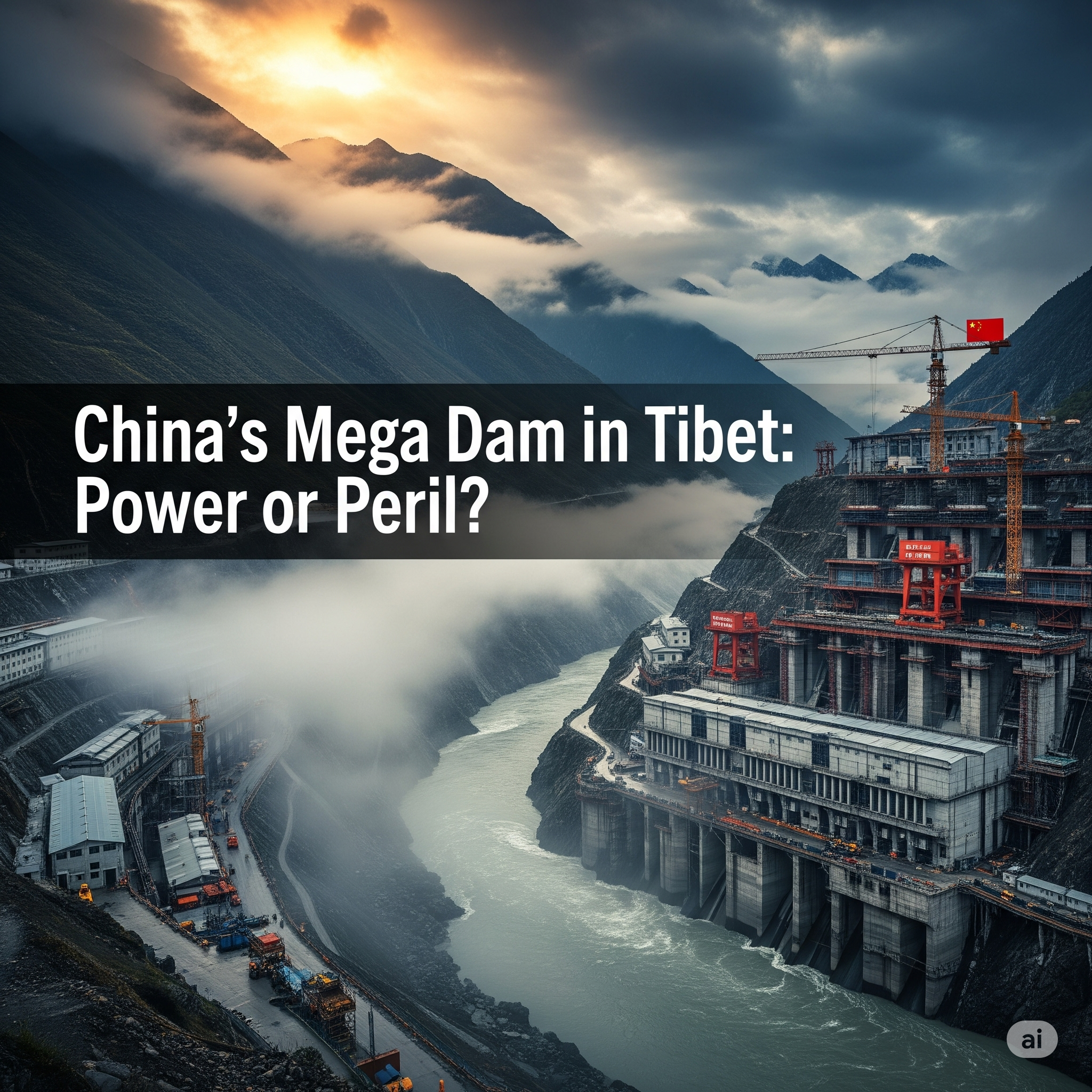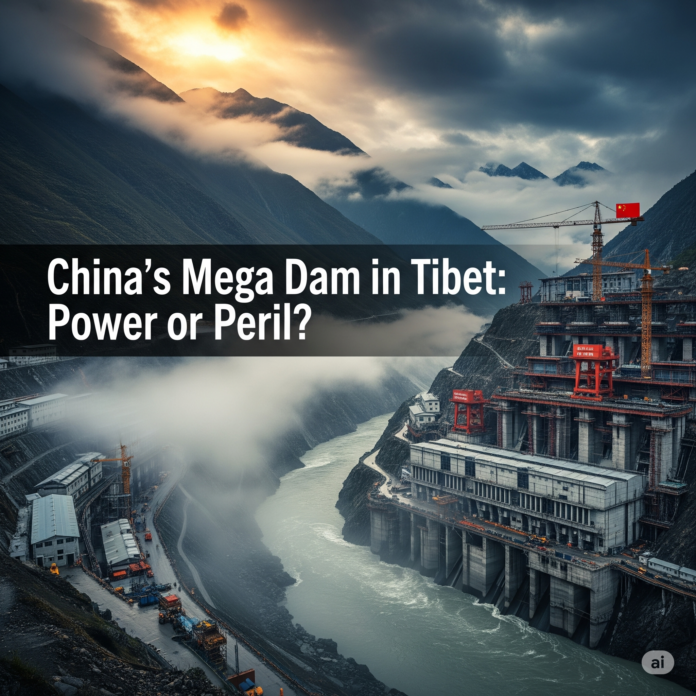
In a bold move that underscores both its engineering ambition and geopolitical strategy, China has officially begun constructing what is set to become the largest hydropower dam in the world, deep within the remote and rugged canyons of Tibet’s Yarlung Tsangpo River. This colossal infrastructure project—larger even than the famed Three Gorges Dam—is expected to generate over 60 gigawatts of electricity when complete, enough to power entire nations.
The location is as symbolic as it is strategic. The Yarlung Tsangpo, originating from the sacred Mount Kailash in Tibet, eventually flows into India and Bangladesh as the Brahmaputra River—a lifeline for millions of people downstream. For decades, scientists, environmentalists, and regional governments have feared this very development: the transformation of the world’s deepest canyon into a hydroelectric mega-project.
🌊 The Scope of the Project
The dam, part of China’s long-term clean energy roadmap, is located in Medog County, a geologically unstable but water-rich region at the eastern edge of the Himalayas. Officials say it is part of China’s bid to achieve carbon neutrality by 2060, using renewable energy to reduce reliance on coal. However, at an estimated cost of over $130 billion USD, this is more than a climate project—it’s a statement of dominance in both technology and regional power.
The facility will use a multi-stage cascade system—a series of linked power stations—to capture the river’s immense kinetic energy as it plummets nearly 2,000 meters through the Yarlung Tsangpo Grand Canyon, often dubbed the “Everest of Rivers” due to its scale and difficulty.
🇮🇳 Regional Tensions on the Rise
China’s unilateral decision to begin construction without consulting India or Bangladesh has triggered alarm bells across South Asia. Both countries rely heavily on the Brahmaputra’s seasonal flow for agriculture, drinking water, and local ecosystems. The absence of any binding water-sharing agreement between China and these downstream nations leaves them vulnerable to upstream manipulation.
Indian officials have expressed deep concern about the project’s potential to divert water, disrupt sediment flow, or even trigger catastrophic floods in the event of natural disasters or engineering failures. In response, India is fast-tracking its own dam projects in Arunachal Pradesh, a contested region China claims as “South Tibet.”
For Bangladesh, which sits at the end of the river’s journey, the consequences could be even more severe. Changes in water volume or timing could affect crop yields, fisheries, and livelihoods, exacerbating climate vulnerabilities in a low-lying delta nation already facing rising sea levels.
🌏 Environmental and Cultural Fallout
The region is one of the most biologically rich and geologically fragile ecosystems on Earth. Conservationists have warned that damming the Yarlung Tsangpo could destroy habitats for rare flora and fauna, disrupt traditional Tibetan communities, and desecrate areas considered sacred by local populations.
Adding to the environmental risk is the area’s seismic volatility. The dam site is situated near fault lines prone to earthquakes and landslides—a dangerous combination when dealing with massive reservoirs and delicate infrastructure.
Tibetan advocacy groups have also spoken out, condemning what they view as ecological imperialism. They argue that the project represents another instance of China exploiting Tibetan lands without regard for indigenous rights or environmental stewardship.
⚖️ A Dam of Global Significance
The implications of this megaproject stretch far beyond China’s borders. It brings to the fore the need for international river governance, especially in Asia, where transboundary rivers support over a billion people. Despite repeated calls from environmental NGOs and water policy experts, there is still no formal treaty governing the flow of the Brahmaputra.
The dam also reveals China’s evolving approach to geopolitics. Through massive infrastructure initiatives like this and the Belt and Road Initiative, Beijing continues to assert its regional dominance—both physically and symbolically—over shared resources.
🔍 What Happens Next?
With construction underway, the world will be watching closely. India is expected to ramp up diplomatic pressure, while civil society groups will likely intensify campaigns for transboundary river protections. Meanwhile, questions remain:
- How will China mitigate the environmental risks?
- Will the project increase or reduce regional cooperation?
- What safety mechanisms are in place in case of seismic disaster?
Whatever the answers, one thing is clear: the story of the Yarlung Tsangpo dam is not just about power—it’s about who controls the future of water in Asia.


